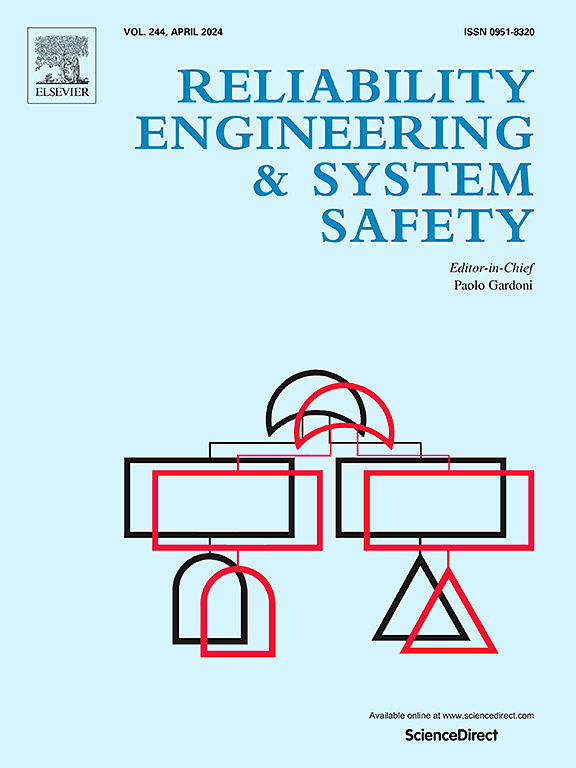Functionality assessment and improvement of medical buildings during the emergency: Incorporating resource restructuring and patient priority scheduling
IF 9.4
1区 工程技术
Q1 ENGINEERING, INDUSTRIAL
引用次数: 0
Abstract
This study proposes a comprehensive framework for post-earthquake functionality assessment of medical buildings. This framework incorporates the cascading damages of structural and non-structural components, medical equipment, and the functional interdependencies of subsystems by combining Bayesian networks and fault tree methods. Considering the emergency characteristics of medical buildings, the maximum treatable nominal number of earthquake casualties is proposed as the functionality indicator. The indicator is quantified by applying a Genetic Algorithm to a discrete event simulation model based on the Markov process. In this study, resource restructuring, medical room redistribution, and dynamic priority scheduling of casualties are introduced into the framework for the first time, which addresses the gaps in the dynamic changes and self-adaptation adjustments of emergency treatment scenarios. The operability and effectiveness of this framework are verified through numerical research on a hospital. This study analyzes the effects of cascading damages of components on hospital functionalities, revealing that hospital functionality is overestimated when the interdependence of components is ignored. Additionally, the study also validated the effectiveness of organizational management methods such as resource restructuring and redistribution, as well as dynamic priority scheduling of casualties, in improving hospital functionalities through parameter analysis methods.
紧急情况下医疗建筑的功能评估和改进:结合资源重组和病人优先安排
本研究提出一个综合的医疗建筑震后功能评估框架。该框架结合贝叶斯网络和故障树方法,将结构和非结构部件、医疗设备和子系统的功能相互依赖性的级联损伤纳入其中。考虑到医疗建筑的应急特性,提出最大可治疗的名义地震伤亡人数作为功能指标。采用遗传算法对基于马尔可夫过程的离散事件仿真模型进行量化。本研究首次将资源重组、病房再分配、伤员动态优先调度等引入该框架,解决了急诊救治场景动态变化和自适应调整的空白。通过对某医院的数值研究,验证了该框架的可操作性和有效性。本研究分析了组件级联损害对医院功能的影响,揭示了当组件的相互依赖性被忽视时,医院功能被高估。此外,研究还通过参数分析方法验证了资源重组和再分配等组织管理方法以及伤员动态优先调度等组织管理方法在改善医院功能方面的有效性。
本文章由计算机程序翻译,如有差异,请以英文原文为准。
求助全文
约1分钟内获得全文
求助全文
来源期刊

Reliability Engineering & System Safety
管理科学-工程:工业
CiteScore
15.20
自引率
39.50%
发文量
621
审稿时长
67 days
期刊介绍:
Elsevier publishes Reliability Engineering & System Safety in association with the European Safety and Reliability Association and the Safety Engineering and Risk Analysis Division. The international journal is devoted to developing and applying methods to enhance the safety and reliability of complex technological systems, like nuclear power plants, chemical plants, hazardous waste facilities, space systems, offshore and maritime systems, transportation systems, constructed infrastructure, and manufacturing plants. The journal normally publishes only articles that involve the analysis of substantive problems related to the reliability of complex systems or present techniques and/or theoretical results that have a discernable relationship to the solution of such problems. An important aim is to balance academic material and practical applications.
 求助内容:
求助内容: 应助结果提醒方式:
应助结果提醒方式:


